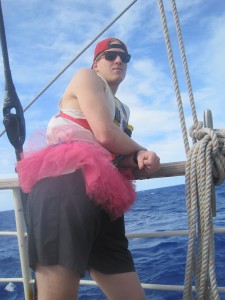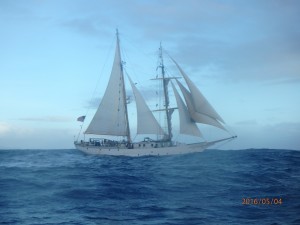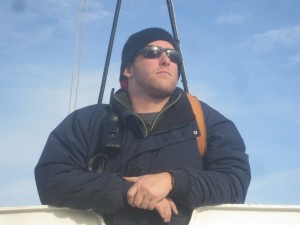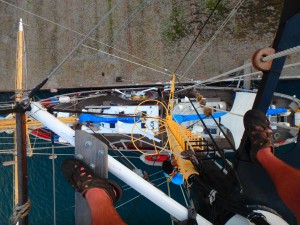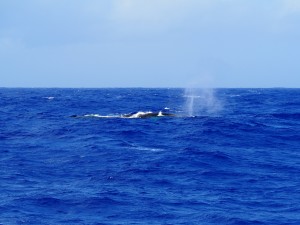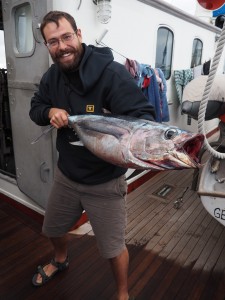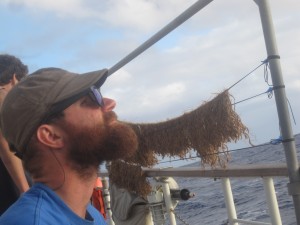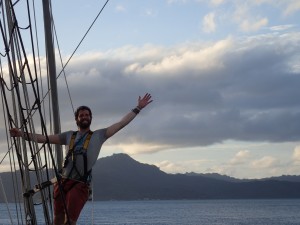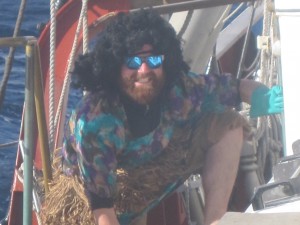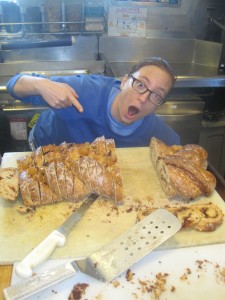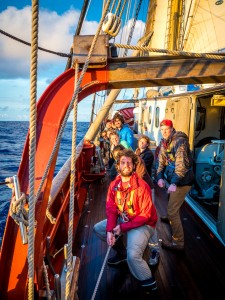Our final phase on the ship was called “JWO Phase.” This stood for “Junior Watch Officer.” In this phase, our staff watch officers stepped back and assigned one student to be the watch officer for the six hour watch. This meant taking orders from the captain, waking him up periodically with any weather or traffic changes, trimming sails, maintaining hourly boat checks and weather logs, and performing sail maneuvers according to what was needed for science deployments. Needless to say, it was pretty stressful. The staff was instructed to step back and let us screw things up, only stepping in when we were about to endanger the ship. I personally got to the point of almost breaking one of our sails before Sara, our first mate, stepped in. This was not uncommon for everyone’s JWO watch. It was a time of many, many mistakes, but also an incredible and intense learning experience. After messing up so often, towards the end of JWO phase, I felt confident that I could keep the ship safe and be able to maneuver it reasonably well. Not a small feat for a bunch of kids who’d never set foot on a boat before. It was a huge privilege to be able to take command of a ship and assume so much responsibility.
JWO phase, however stressful, was still fleeting, like the rest of our voyage. Soon we found ourselves in Raiatea, being warmly welcomed by the community there who knew the Seamans and SEA well. Because of their incredible hospitality, we tried to repay it by letting the community come through a tour of our ship. I realized how much I had grown to love the ship as I was showing families around, trying to explain things in broken French and hand gestures. After taking care of the ship and having the ship take care of us for so long, there is a great emotional attachment to the ship that I had not expected to be so strong.
And the rest of the trip was a blur of sailing between the islands of French Polynesia, soaking in the last bit of sea we could. There were swim calls while we were at anchor, and adventures in a small sailing rig with just two sails. There was mustard on the quarterdeck, and silly limericks composed. There was a zooplankton showdown, and just like always, change was upon us all at once. Life seems to happen at two speeds: dead stop or full throttle.
It didn’t take much time on land for so much to come rushing back, reminding us of the sanctuary that was our time at sea. On land, we have more material comforts, more stability, more space. But land is still a battlefield. At sea we had squalls and rolling waves where we fought to take sail in and huddled together from the rain. Here on land, we use our mental fortitude to battle the rest of life.
Goodbye, sea! The sea is full of hardships, but also full of sanctuary. I can only hope that our experience at sea has made us more equipped to tackle the rest of our land based lives. But here I am, back on land. And it’s not all bad. I have stuff to do, obligations to keep, dreams to live, and most importantly, people to see.
As always, change is a jarring, bitter, but exciting push forward into the future.
